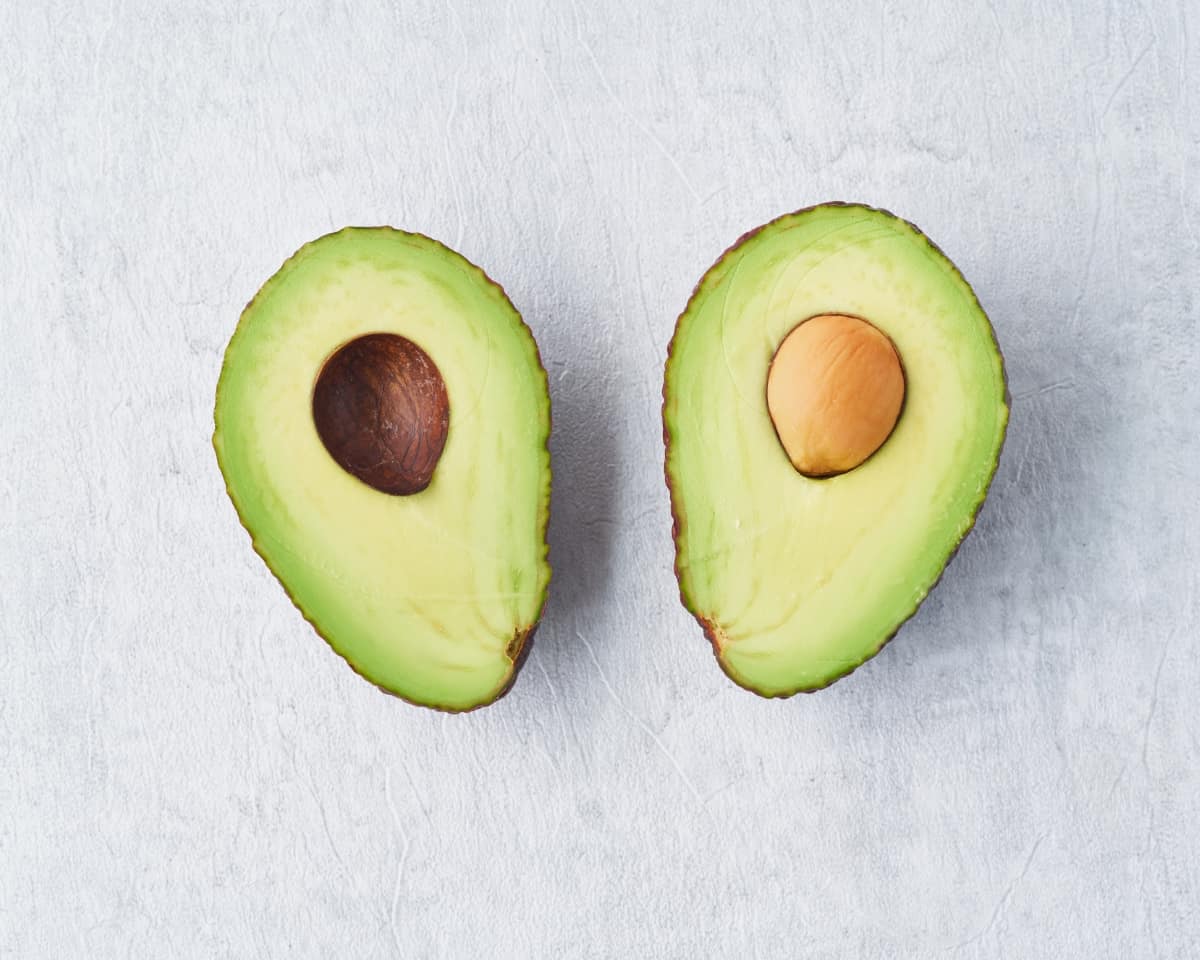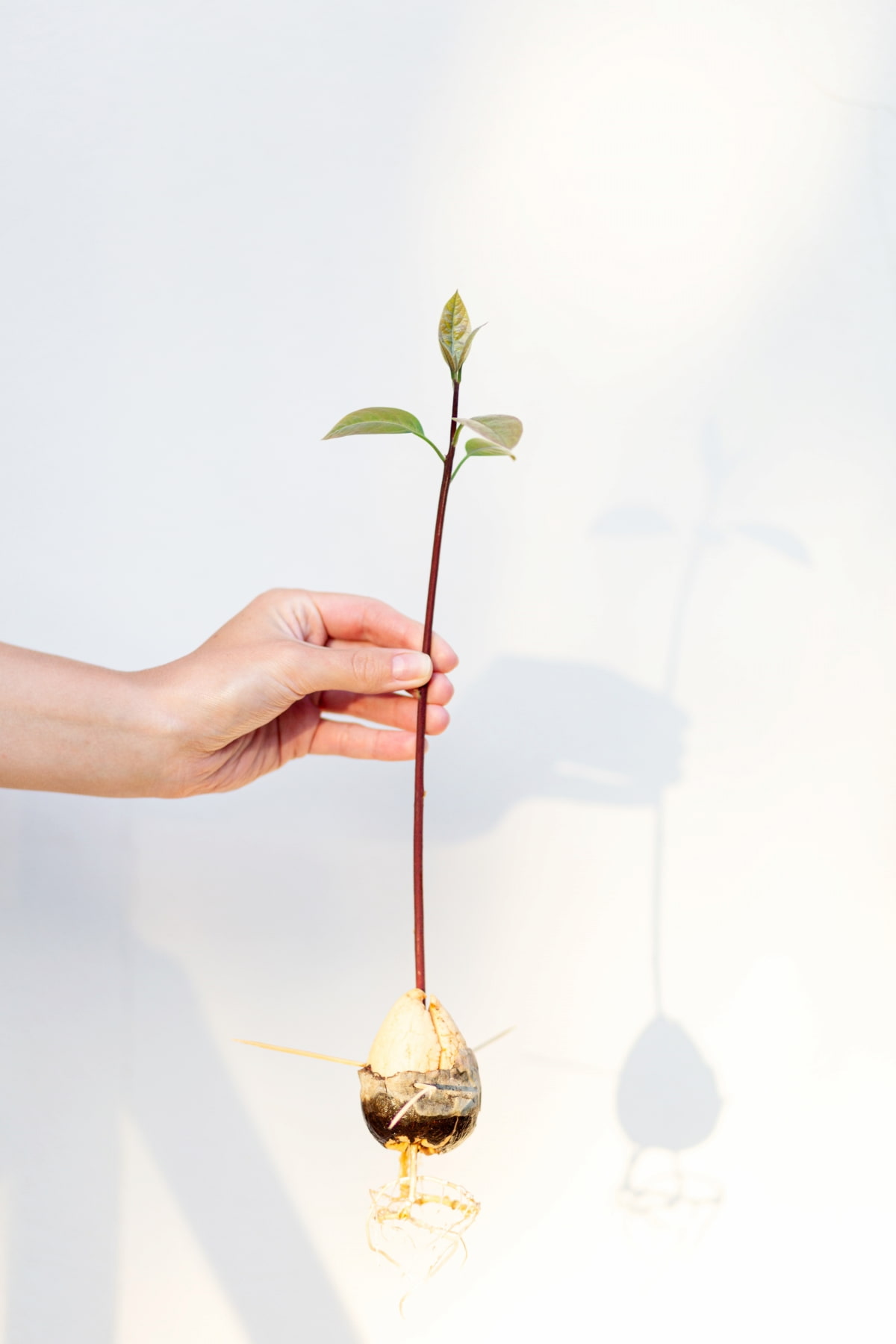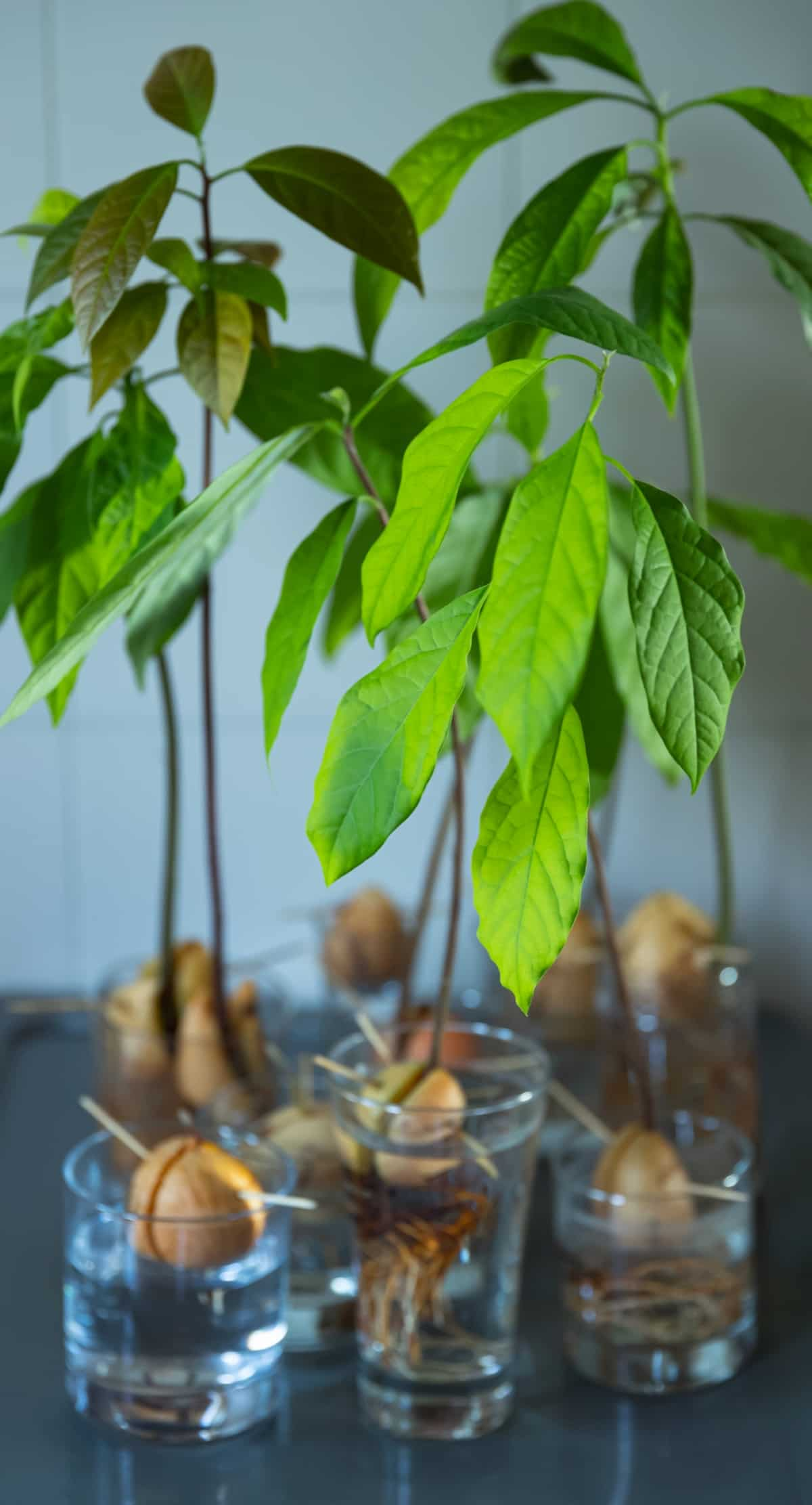Avocado seeds have the incredible ability to sprout into beautiful plants with proper care and conditions. Avocado, a versatile and nutritious fruit, has gained immense popularity worldwide. Let’s check out more information on sprouting Avocado seeds below.

Understanding the Process of Sprouting an Avocado Seed
Time for Avocado seeds to sprout is a fascinating process allowing you to grow an Avocado tree. It all starts with enjoying a delicious Avocado and carefully removing the large pit from its center. Once you have your pit, gently rinse to remove excess fruit residue. Next, locate the top and bottom ends of the pit – one end will be slightly pointed, while the other will be flat.
Creating optimal conditions for your Avocado seed is important to encourage successful sprouting. One popular method involves suspending the pit over a glass of water using toothpicks inserted into its sides. The pointed end should face upwards while half of the pit remains submerged. When your Avocado seed has developed strong roots and grown several inches tall, it’s ready for transplantation into the soil. With patience and care, you’ll witness your little green gem transform into an impressive Avocado tree over time.
The Length of Time Required for Sprouting an Avocado Seed: Factors and Considerations
The tree can take about 8 to 12 years to produce Avocados. However, it’s worth noting that even after all those years of waiting, the quality of the Avocados may not be the same as those from the parent plant. Several factors contribute to this lengthy timeline. Avocado trees grown from seeds go through different stages before reaching maturity. These stages include the seedling stage, vegetative stage, reproductive stage, and maturation. Each stage requires specific care and conditions for the tree to progress toward fruit production.
Avocado Seed Growing Stages
A small sprout emerges from the planting Avocado pit during the seedling stage. This is a delicate period where proper care is essential for optimal growth. The seedling requires adequate moisture and warmth to thrive. As it enters the vegetative stage, the Avocado plant develops leaves and establishes its root system.
In case you missed it: How to Grow Avocado Organically: A Step-By-Step Guide with Simple Steps

This is when regular watering and sufficient sunlight are critical factors in ensuring healthy growth. Moving on to the reproductive stage, which usually occurs after several years of cultivation, tiny flowers appear on mature Avocado trees. These flowers eventually lead to fruit production if successfully pollinated. At this point, it will produce Avocados ready for harvest.
Exploring the Germination Process of Avocado Seeds: Insights and Tips
The first step in Avocado seed germination is removing the outer skin of the pit. This can be done by carefully scoring it with a knife and then peeling it off. Once exposed, you will notice a lighter-colored layer called the hypocotyl, which eventually becomes the stem of your Avocado plant.
When it comes to planting an Avocado seed, make sure to select a well-draining potting mix that retains moisture but doesn’t become waterlogged. Once your Avocado seed has sprouted roots and leaves begin to appear, you can transplant it into a larger pot with nutrient-rich soil. Remember that Avocados are tropical plants that thrive in bright light conditions indoors or full sun outdoors.
How Do You Make an Avocado Germinate Faster?
It’s important to select a ripe Avocado for seed germination. A firm Avocado may not yield the best results. Once you have your ripe Avocado, carefully remove the seed and thoroughly rinse to remove any remaining fruit residue. Next, consider using water as a catalyst for faster germination.
You can place the Avocado seed in a glass of water with the pointed end facing upward. Another method involves wrapping your Avocado seed in damp paper towels or placing it in a plastic bag with moist soil or sand. This provides optimal humidity and encourages quicker sprouting.
How Long for Avocado Seed to Sprout?
On average, an Avocado seed takes about 2 to 6 weeks to sprout and begin its journey toward becoming a full-fledged tree. But keep in mind that this timeframe can vary depending on various factors. The first factor is the freshness of the seed itself. Fresh seeds will have a higher chance of germination and may sprout more quickly than an older or dried-out seed.
Factors Affecting the Speed and Success of Avocado Seed Germination
Several factors can influence the speed and success of Avocado seed germination. One crucial factor is the freshness of the seed itself. A fresh, ripe Avocado will significantly increase your chances of successful sprouting. Another important consideration is the temperature for Avocado seed germination. Avocados thrive in warm conditions, ideally between 22–38°C. Maintaining a consistent temperature within this range will help promote faster germination.
Proper moisture levels are also essential for successful sprouting. The Avocado seed needs to be kept consistently moist but not overly saturated. Finding the right balance is crucial to prevent rotting or drying out. Additionally, light plays a role in Avocado seed germination. While Avocados do not require direct sunlight at this stage, providing them with indirect light can support healthy growth.
Nurturing an Avocado Seed: Essential Care and Conditions for Successful Sprouting
Proper watering is vital. Avocado seeds require consistent moisture but not excessive waterlogging. In addition to watering, temperature plays a significant role in Avocado seed sprouting. These plants thrive in warm environments with temperatures ranging from 22–38°C. Light requirements are another crucial aspect of nurturing Avocado seeds. Choose an appropriate potting mix rich in organic matter for optimal nutrition and drainage.
In case you missed it: How to Increase Female Flowers in Avocado: Explained in 10 Simple Steps

The Role of Water and Moisture in Avocado Seed Germination
Water is a vital element in the germination process of Avocado seeds. Without proper moisture, the seed may remain dormant and fail to germinate. During the initial stages of germination, it is important to keep the Avocado seed consistently moist. This can be achieved by placing it in a container with water or using a damp paper towel. The moisture helps activate enzymes within the seed that initiate growth. Placing a plastic bag or covering over your growing container can help create a humid microclimate conducive to successful sprouting.
Light Requirements for Sprouting Avocado Seeds
Avocado seeds require adequate light to sprout and grow into healthy seedlings. During the germination stage, Avocado seeds prefer indirect and direct sunlight. If you don’t have access to sufficient natural light, artificial lighting can also be used. It’s essential to ensure that Avocado seeds receive approximately 12-16 hours of continuous light each day during germination.
Troubleshooting Common Issues in Avocado Seed Germination
One common issue people face is rotting or mold growth on the Avocado seed. This can happen if the seed is kept too wet or humid for too long. To prevent this, ensure enough moisture for the seed to sprout and allow it to dry out slightly between waterings. Another problem that may arise is slow or no germination. Avocado seeds naturally have a variable germination rate, so some seeds may take longer than others to sprout. However, if you’ve been waiting for several weeks without any signs of sprouting, there may be an issue with the viability of the seed.
Try using fresh and healthy Avocado seeds from ripe fruit to increase your chances of successful germination. Additionally, ensure that you provide adequate warmth and moisture for optimal conditions. Keep an eye out for pests such as fungus gnats or aphids. These insects can damage young Avocado plants and hinder their growth. If you notice any pests on your planting of a sprouted Avocado, treat them promptly with appropriate organic pest control methods.
Transplanting Sprouted Avocado Seeds
Once your Avocado seed has sprouted and developed a healthy root system, it’s time to transplant it into a larger container. This step ensures your Avocado plant’s continued growth and development. Before transplanting, choose a container or planting spot that provides ample space for the roots to spread. Avocado trees have an extensive root system, so you’ll need a deep pot or well-prepared soil in the garden.
In case you missed it: How to Grow Avocado in a Greenhouse: A Step-by-Step Guide for Seed to Harvest

When handling the sprouted seedling, be gentle to avoid damaging the delicate roots. Carefully remove it from its current container or carefully dig it up if being transplanted outside. Make sure not to disturb any of the existing roots during this process. After transplanting, water thoroughly but avoid overwatering as too much moisture can lead to the rotting of roots. Keep an eye on your newly transplanted Avocado plant and provide adequate sunlight and regular watering.
Conclusion
Growing Avocados from seed allows you to control the quality and type of fruit produced. While it may take several years for a tree grown from seed to bear fruit, there is potential for unique varieties with different flavors and characteristics compared to commercially available Avocados.
- Feed Your Flock for Less: Top 10 Tips to Save on Chicken Feed
- Ultimate Guide to Ossabaw Island Hog: Breeding, Raising, Diet, and Care
- Hatching Answers: The Top 10 Reasons Your Chickens Aren’t Laying Eggs
- Eggs and Economics: Breaking Down the Cost of Raising Backyard Chickens
- Defend Your Greens: Proven Methods to Keep Iguanas Out of Your Garden
- Ultimate Guide to Cinnamon Queen Chicken: A Comprehensive Guide for Beginners
- Ultimate Guide to California Tan Chicken: Breeding, Raising, Diet, Egg-Production and Care
- Ultimate Guide to Marsh Daisy Chicken: Breeding, Raising, Diet, and Care
- 10 Types of Chicken Farming Businesses You Can Start for Profits